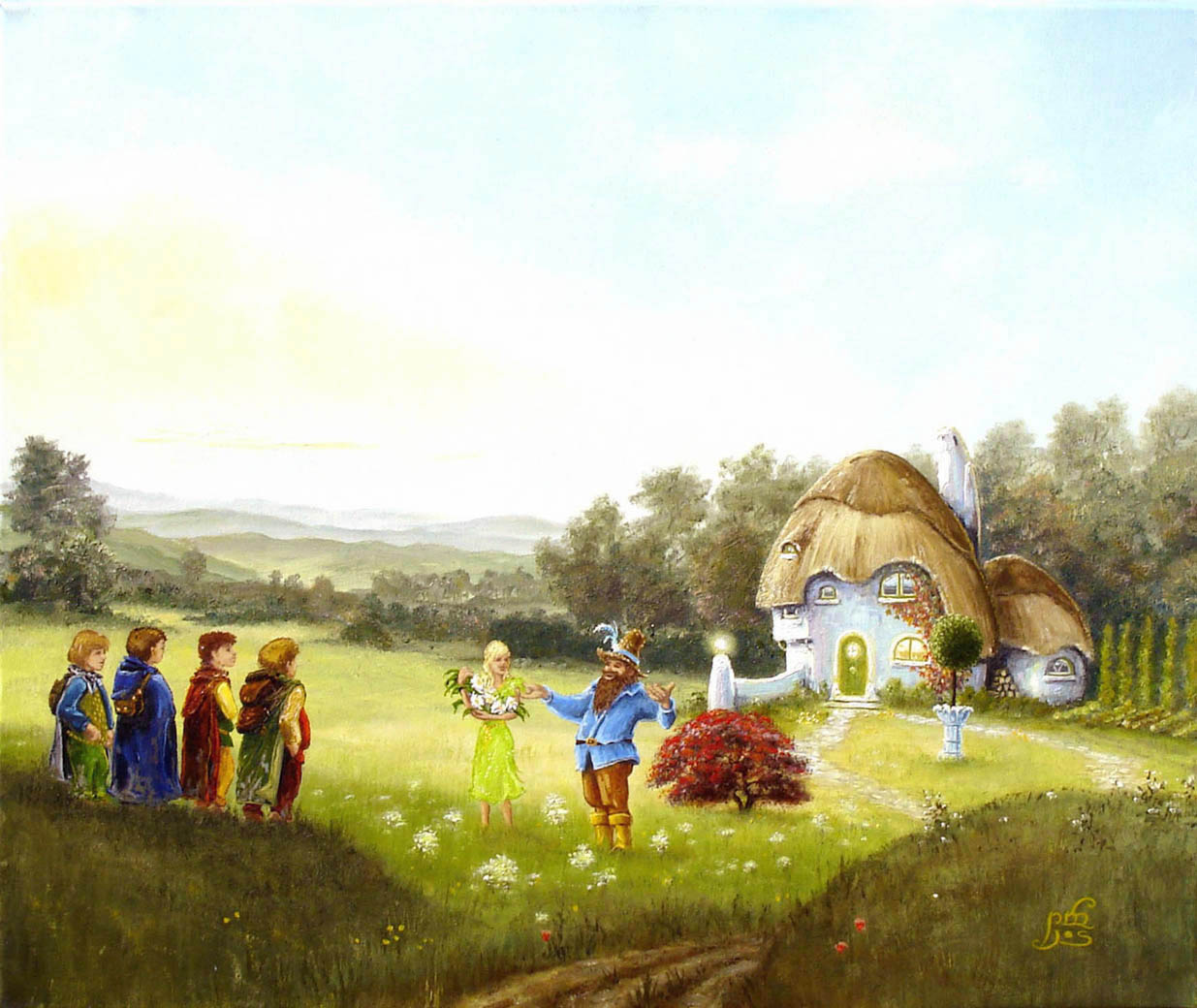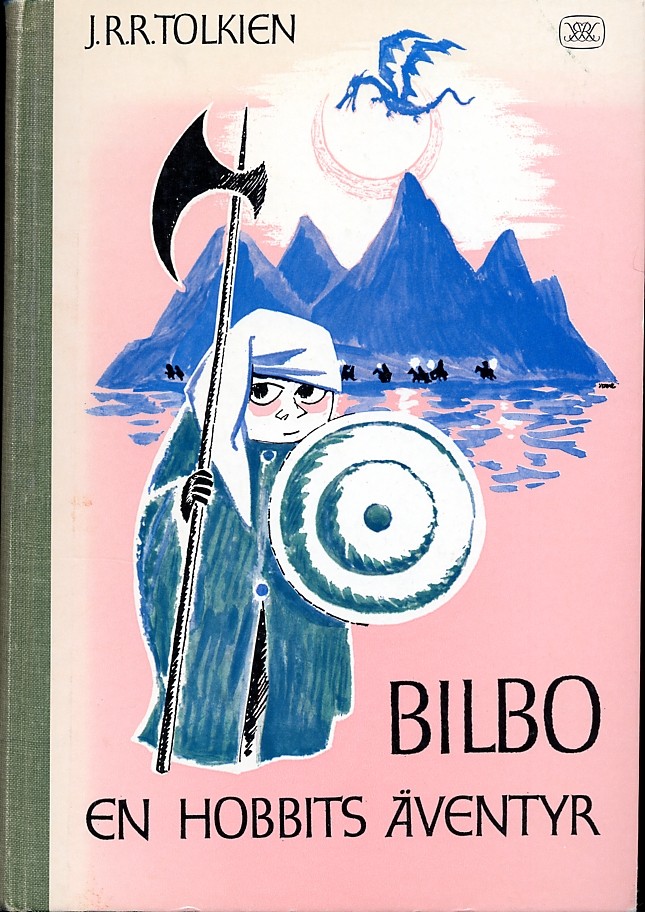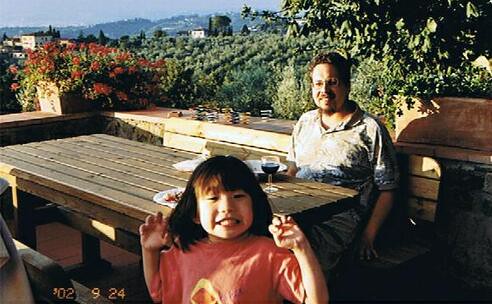|
|
Tuesday, March 31st, 2009
So here is the nice thing about being a kid -- you don't have to know that Gandalf is "not human" (as I said in comments below -- he seems to me to be without any kind of flaw that would make him human, reachable); so when Sylvia heard him talking with Thorin at the end of Chapter 2, saying that he had been warned about the trolls by elves he met on the road and had come back to make sure the dwarves were not in any danger, the first thing she thought was, "I bet he's just saying that, trying to take all the credit." Now internally I think, well, that doesn't make sense -- Gandalf's character is not that of a seeker after undeserved credit, plus what he's saying matches up with the plot of the rest of the book -- but I love Sylvia for giving me a different window on Gandalf's character, reminding me that I should be suspicious of his motives as much as those of anyone else in the book.
posted evening of March 31st, 2009: 7 responses
➳ More posts about Sylvia
|  |
|
As I've been reading His Dark Materials over the last few months, I've been trying to figure out how to tie it together with The Chronicles of Narnia. And now that I'm reading The Lord of the Rings, well... I can see some pretty distinct similarities to the other two series here as well. This post is for thinking about what parallels exist between the three series, and how they are different.
I think in each case, the author is working on three projects simultaneously. Primarily there is the story to be told -- in the case of LOTR and HDM the story is of a few central characters engaged in a quest; in Narnia it is much looser and less directed. But this is what's in front: you get to know and sympathize with some characters, take an interest in what's happening to them. The author's second task is the construction of a world (or in the case of HDM, a number of parallel worlds) to serve as the setting for the story. All three authors take this quite seriously, and all do it well -- though I am tempted to say Lewis' world-building is not on as high a level as Pullman's or Tolkien's, getting involved in the fictional universe is a core part of the experience of reading any of these series. One key difference is that Lewis and Tolkien rely on folklore and myth to build their worlds, where Pullman is trying to express the world (primarily) of Christian myth without relying on superstition. Pullman's is a hugely more ambitions project here, and this bit of it is not always successful. (The portion of HDM that in retrospect I found the most affecting, the descent into the world of the dead, was also the portion where the least attention was paid to science and the most use made of mythology.)
Undergirding all this is an ideological project, what I'm thinking of as an ontological narrative. Lewis is interested in retelling the story of Christian theology -- I have not studied the books closely enough to be more specific than that, there is a lot of writing on the subject out there though. Pullman (whose work can be seen as an answer to Lewis) is interested in creating a world without God, reframing the story of Christian theology into a grasping for power by forces of ignorance. (He does a magnificent job of it, though I was mainly taken with the primary story in HDM, the story of Lyra and Will's quest.) I haven't read enough of Tolkien yet to understand what his ontological narrative is; and it may be that in LOTR the main thing is really the world-building project.
posted evening of March 31st, 2009: Respond
➳ More posts about The Lord of the Rings
|  |
Monday, March 30th, 2009
Two things about The Hobbit, which I started reading aloud with Sylvia last night: It is a whole lot of fun to read aloud, with opportunities for doing new voices at every turn; and it seems like it will be kind of fun to be reading in parallel with The Fellowship of the Ring. I'm just at the point in Fellowship, where the party is leaving Rivendell; in a lot of ways this seems like the real beginning of the story, with the first half of the book having been a prologue. I'm interested in Frodo, Sam, and Strider; none of the other travellers has really got my attention yet. (Besides Gandalf of course; but he distinctly does not strike me as a real character, as a human.) Pippin and Merry both have had moments but they are generally in the background so far.
posted evening of March 30th, 2009: 4 responses
➳ More posts about The Hobbit
|  |
Saturday, March 28th, 2009
I stayed up late last night reading The Fellowship of the Ring; it is starting to really come together for me. In the first several chapters I was feeling a little annoyed at the pace -- granted this is a three-volume, 1500-page story that is being set up, so it is only reasonable that Tolkien spend some time setting it up... Around Chapter VII ("In the House of Tom  Bombadil") is where the story really begins to pick up and feel interesting to me. For one thing I just love the characters Tom and his wife Goldberry -- "characters" might not be the right word here, they are just quick sketches meant to move the story along; but they are lovingly drawn and engaging. Bombadil") is where the story really begins to pick up and feel interesting to me. For one thing I just love the characters Tom and his wife Goldberry -- "characters" might not be the right word here, they are just quick sketches meant to move the story along; but they are lovingly drawn and engaging. I see a potential criticism of this book, of the early part at least, that Frodo and his friends are just moving along from one deus ex machina to the next. Compare Frodo and company getting lost in the Barrow Downs, with Bilbo and the dwarfs getting lost in Mirkwood. The two sequences are built up similarly: the characters follow illusions into the wilderness and are separated and black out, then the main character awakens and finds his companions hostage. In The Hobbit, Bilbo rescued the dwarfs by calling on an inner reserve of strength which we did not know he had, fighting off the spiders with his dagger; in Fellowship, Frodo rescues his companions by invoking the song of Tom Bombadil -- Tom comes and destroys the barrow-wight without breaking a sweat. This avoids being lame by virtue of Tom being such a fun presence -- I was happy enough to see him back in the story for a bit longer, I didn't bother about the ease with which they busted out. And of course this is taking place much earlier in the story, than the Mirkwood episode in The Hobbit.
posted morning of March 28th, 2009: 2 responses
➳ More posts about Readings
|  |
Sunday, March 15th, 2009
 How I come to be reading The Hobbit now: Sylvia and I are pretty close to finishing up The Amber Spyglass now; I was casting about for what book to read next and realized that His Dark Materials is reminding me in some key ways of Tolkien's trilogy. That made me think about how much I had loved The Hobbit as a kid -- if memory serves I loved it much more deeply than the trilogy, it seems like I read The Lord of the Rings less whole-heartedly, with an eye mostly toward keeping up with my D&D-enthusiast friends... Anways -- so I asked Sylvia if she would like to read this next, she said she would (unsurprising -- she's really getting into fantasy novels nowadays), and I thought I would look through it beforehand. How I come to be reading The Hobbit now: Sylvia and I are pretty close to finishing up The Amber Spyglass now; I was casting about for what book to read next and realized that His Dark Materials is reminding me in some key ways of Tolkien's trilogy. That made me think about how much I had loved The Hobbit as a kid -- if memory serves I loved it much more deeply than the trilogy, it seems like I read The Lord of the Rings less whole-heartedly, with an eye mostly toward keeping up with my D&D-enthusiast friends... Anways -- so I asked Sylvia if she would like to read this next, she said she would (unsurprising -- she's really getting into fantasy novels nowadays), and I thought I would look through it beforehand.
And I'm falling in love all over again. I had forgotten how attractively witty and cultured Tolkien's narrative voice is -- it reminds me a lot of Grahame's voice in The Wind in the Willows. I wonder if this is true of the trilogy as well -- I expect it is, and suddenly I'm looking forward to rereading those books, and thinking I might get a lot more out of them than I did back in my childhood.
posted morning of March 15th, 2009: 4 responses
|  |
Friday, March 13th, 2009
 My memory of reading The Hobbit (which happened about 30 years ago) has always been a very positive one, of being into the book in a pre-analytical way and just loving it, and I was always scared to pick it up to reread for fear that quality of the experience would be gone. I am happy to report (a few chapters in) that the quality is not only present but is augmented by seeing the page with a little more experienced (hopefully wiser but certainly more familiar with the world) eye. My memory of reading The Hobbit (which happened about 30 years ago) has always been a very positive one, of being into the book in a pre-analytical way and just loving it, and I was always scared to pick it up to reread for fear that quality of the experience would be gone. I am happy to report (a few chapters in) that the quality is not only present but is augmented by seeing the page with a little more experienced (hopefully wiser but certainly more familiar with the world) eye.
 Don't miss Tove Jansson's illustrations for a Swedish edition of The Hobbit. (And it just occurs to me, oh yeah! Hobbits and Moomins have certain distinct similarities! Also Hobbits and Hemulens.)
posted evening of March 13th, 2009: Respond
➳ More posts about Tove Jansson
| |
|
Drop me a line! or, sign my Guestbook.
•
Check out Ellen's writing at Patch.com.
| |

